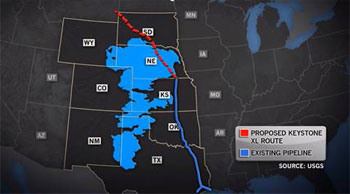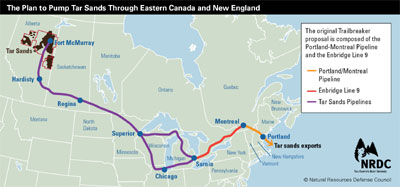On this last day of the public comment period on the Keystone XL pipeline, opponents are delivering over 2 million comments to the State Department – double that previous comment period – that urge Secretary Kerry and President Obama to reject it.
Amazingly, nearly 900,000 of the comments come from people across the world, outside the US.
Over 86,000 people signed a Pledge of Resistance to commit acts of civil disobedience if Kerry recommends approval to President
Obama. 400 students were arrested last week in protest.
"Even the State Department’s oil-soaked analysis acknowledges the pipeline would significantly exacerbate climate pollution under certain scenarios and flagged serious water issues," says the Energy Action Coalition, who call themselves the youth climate movement.
Environmental Resources Management, the contractor that produced the pathetic State Department environmental analysis, didn’t disclose previous contracts with TransCanada during the bidding process and is a member of the American Petroleum Institute.
Most of Keystone has already been built as you can see here, the final section goes right over the Ogallala Aquifer.

"For three years now there’s been an absolutely unprecedented outpouring of reaction to this pipeline proposal: from scientists, Nobel laureates, economists, theologians, and most of all from us ordinary Americans across the country. It’s the biggest blizzard of public comment about any infrastructure project – and now we’ll see if the Obama administration will listen to the people, or to the big oil boys," says Bill McKibben, founder of 350.org.
The latest poll shows that some 60% of Americans support Keystone either because they think it will create jobs or because they’d rather see oil shipped by pipeline than by rail, given the raft of recent problems.
Unfortunately, they are misinformed on both counts by media propaganda. It would create around 2000 temporary construction jobs and 50 permanent ones, not the 40,000-plus advocates keep saying. And because of high costs and capacity restraints, shipping the amount of oil that would travel through the pipeline by rail is not feasible, according to various sources.
Cross-Canada Tar Sands Pipeline Approved
This week, Canada’s National Energy Board gave Enbridge approval to reverse and increase the flow of crude oil – including tar sands oil – in a pipeline that extends from Ontario to Montreal.
Connecting Alberta’s tar sands to Montreal for the first time, it brings it to New England’s doorstep.
From there, the next obvious step is to reverse the flow of the Portland (Maine) to Montreal Pipeline, so tar sands can make it to the east coast for export to the world market.
The purple line shows pipelines that carry tar sands oil – you can see the red line to Montreal will soon turn purple:

"Maine people are counting on the Obama Administration,
with the support of Maine’s Congressional delegation, to require a new Presidential Permit process and an objective environmental review of the risks posed by pumping dirty tar sands oil through our communities, rivers, lakes and bays, including Sebago Lake and Casco Bay," says Glen Brand, Director of Sierra Club’s Maine Chapter.
South Portland, Maine is crafting an ordinance that permanently blocks Canadian tar sands oil from being shipped through the city’s port. They are doing so under threats of lawsuits from the American Petroleum Institute, however.
Flanagan South
Few people have heard of Flanagan South and the tar sands industry wants to keep it that way.
Yet another tar sands pipeline would pass over 1,950 wetlands and waterways, including the Missouri and Mississippi rivers. Also an Enbridge project, the 589 mile long pipeline would carry tar sands from Pontiac, Illinois to Cushing, Oklahoma, where it would meet up with the southern leg of Keystone.
It’s been under construction since last fall, and will initially carry 600,000 barrels of oil a day from Canada, North Dakota and Montana. Unless Sierra Club wins in court.
Flanagan doesn’t need a cross-country permit. By comparison, Keystone XL would be 1,179 miles long and carry 830,000 barrels per day to start (until tar sands is expanded).
Learn more about Flanagan South.
Today is the last day to file your comment on the Keystone pipeline, you can do it here:

Mr Obama,
Please do the right thing here for the planet and out kids. We are counting on you, and do not sucumb to oil industry pressure like most politicians do. You know better. Thank you…